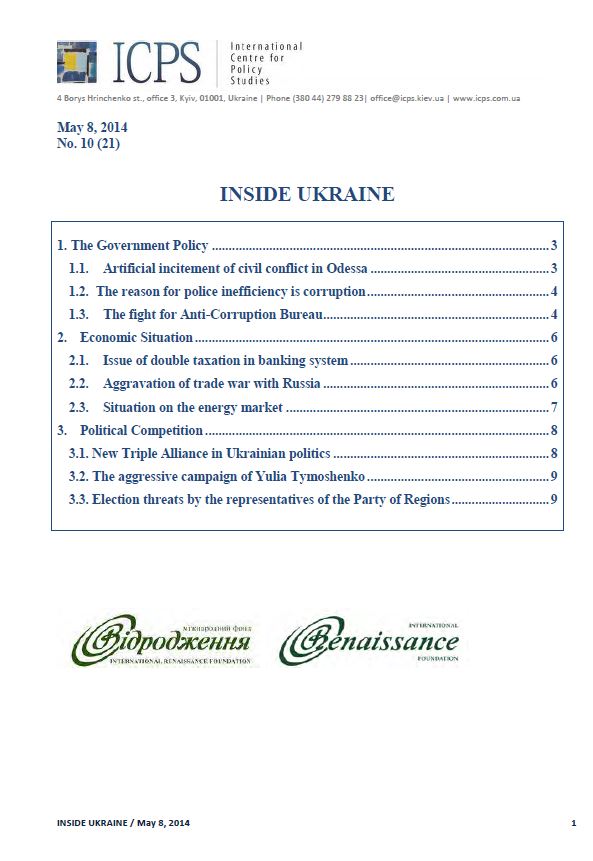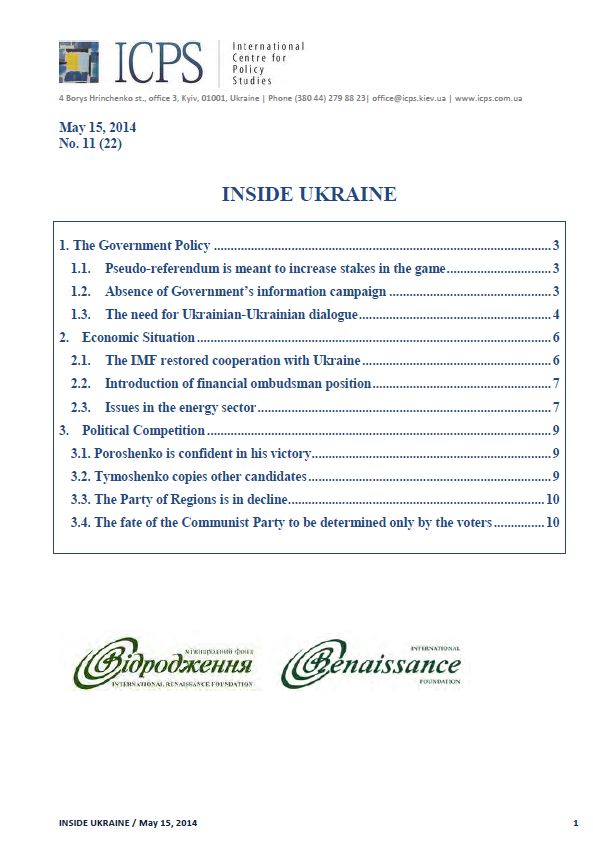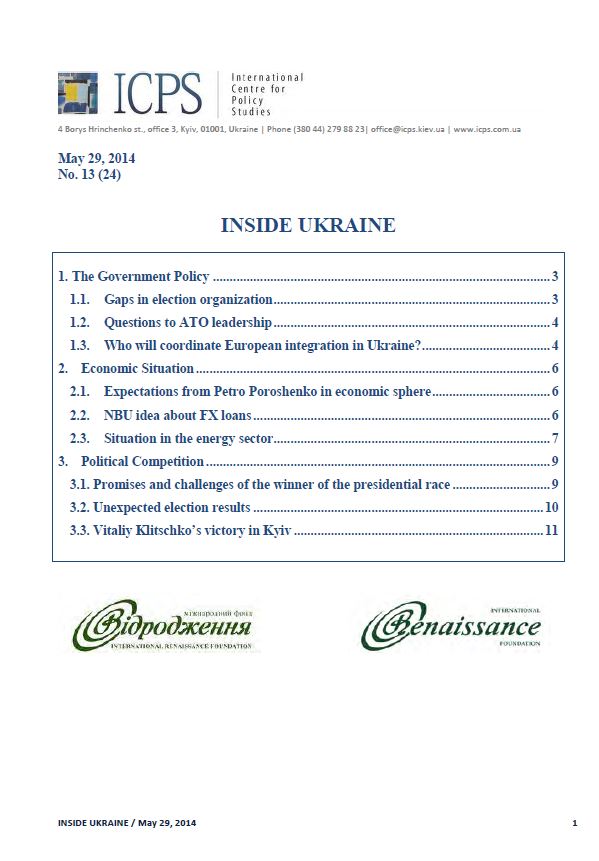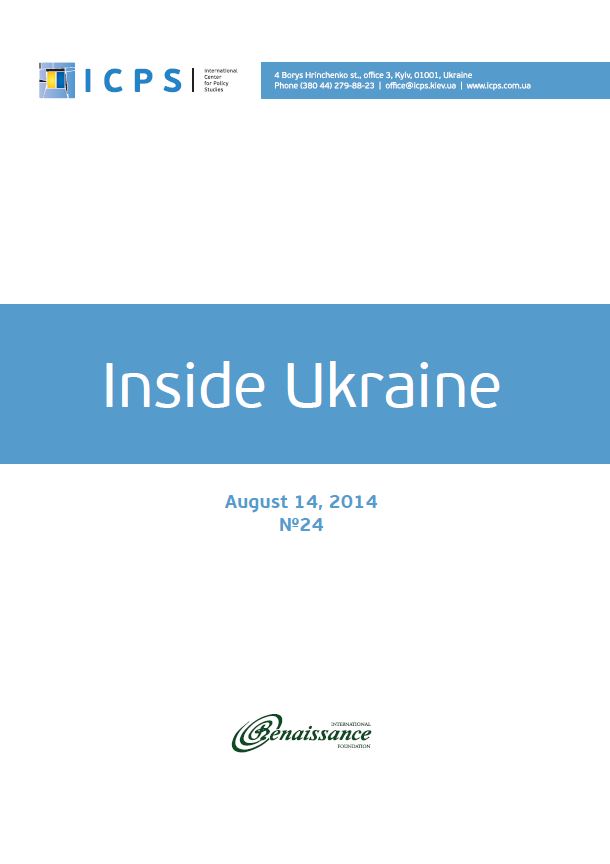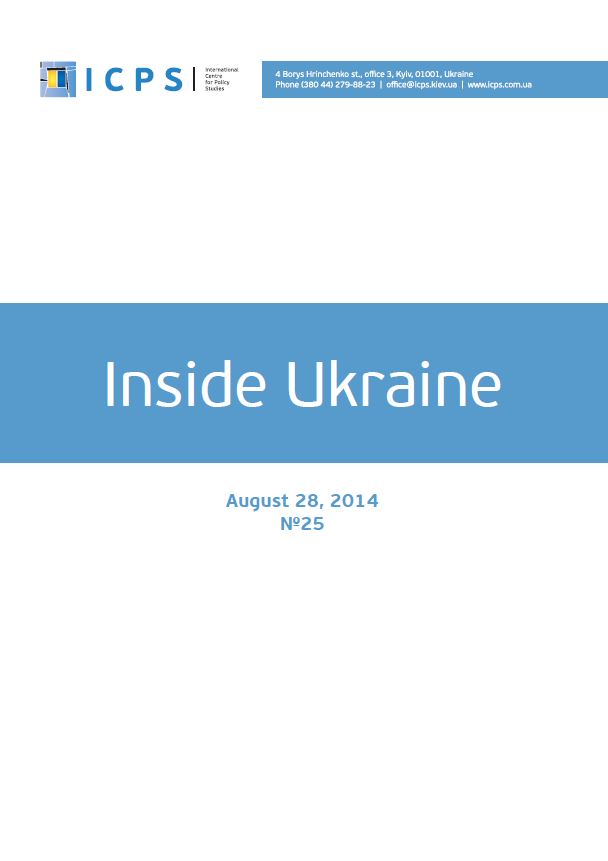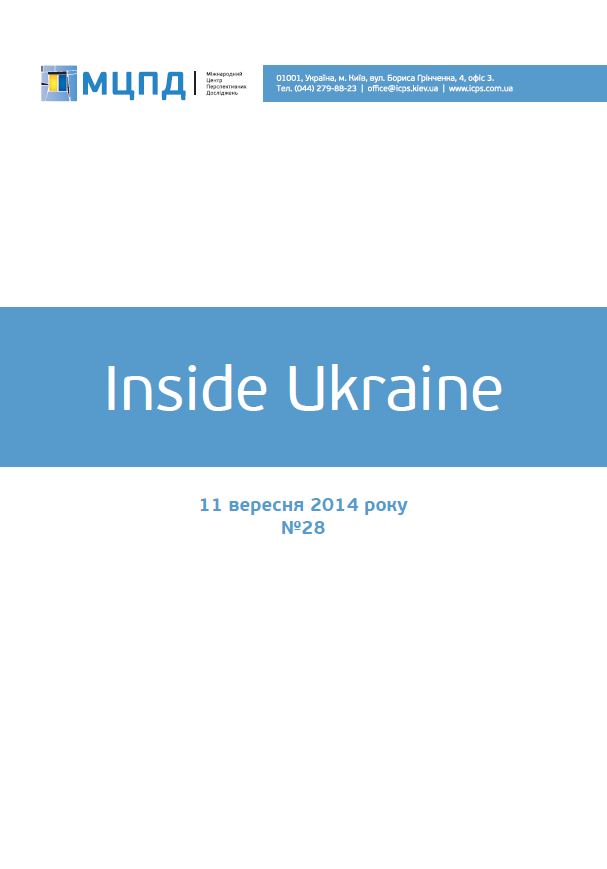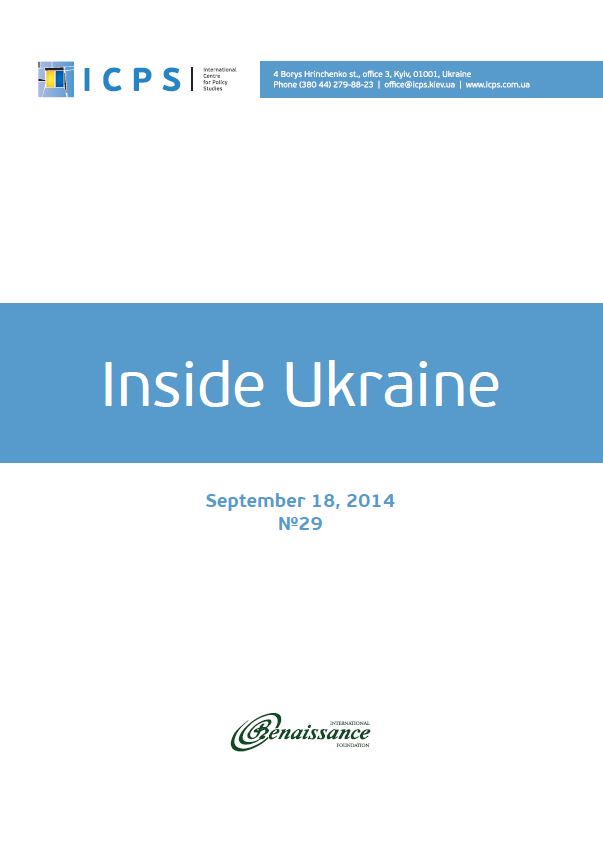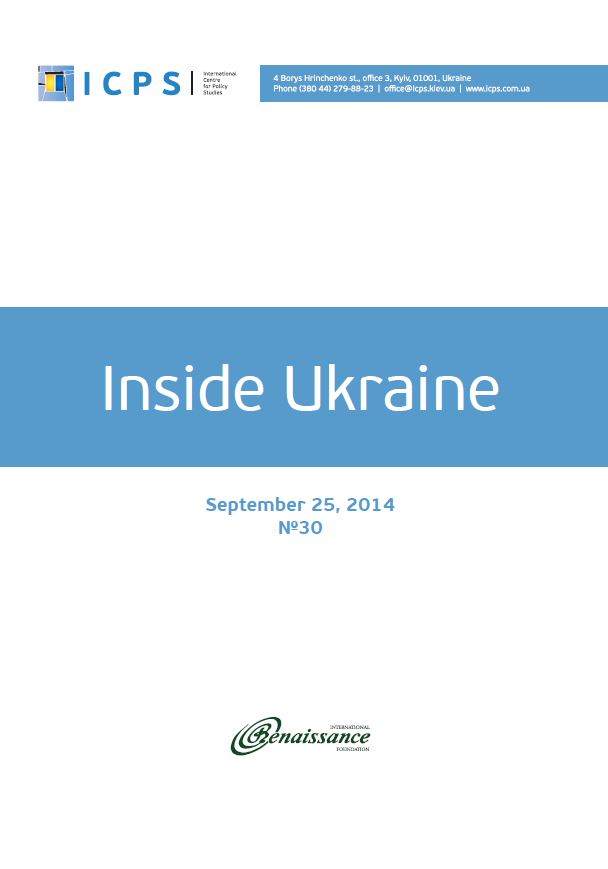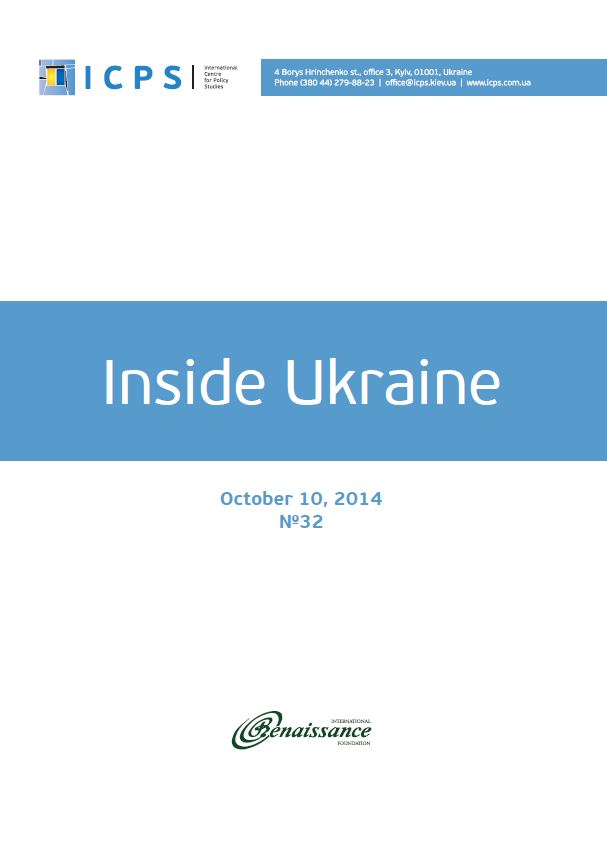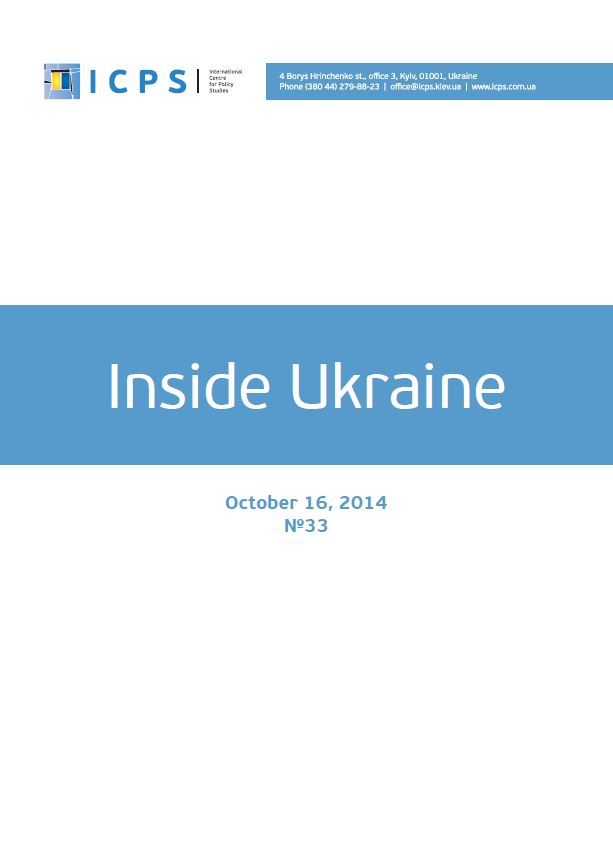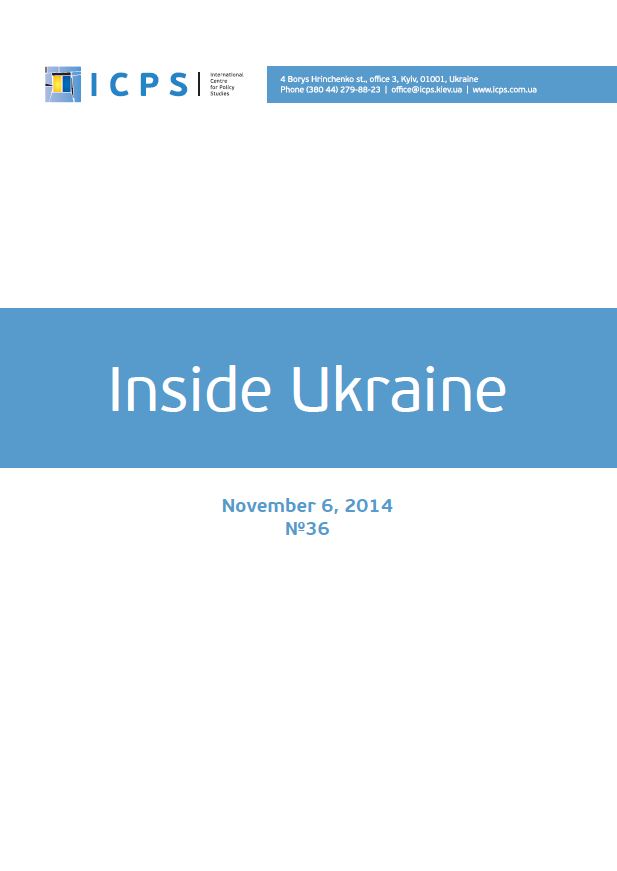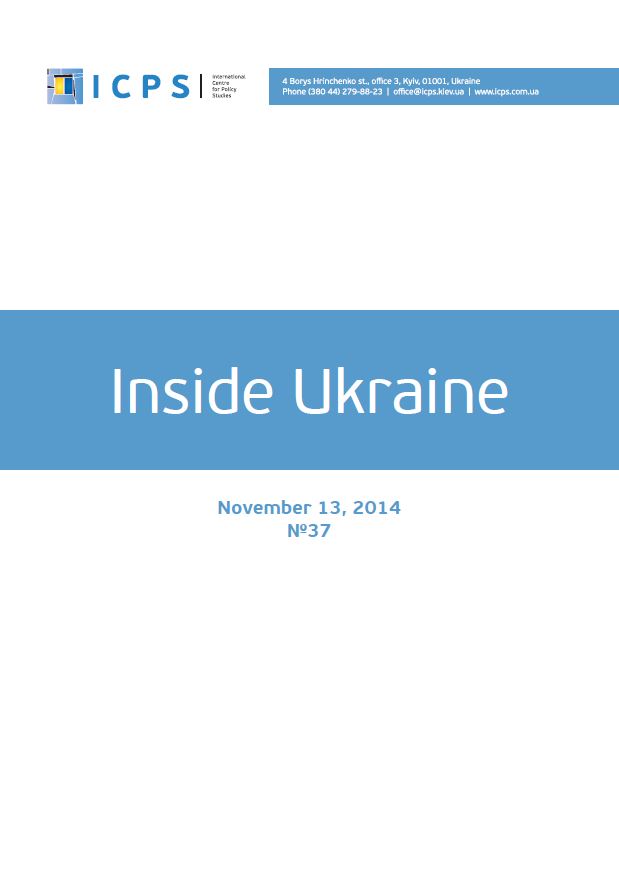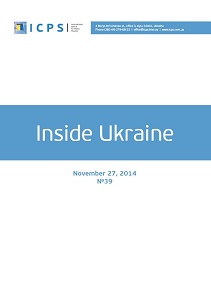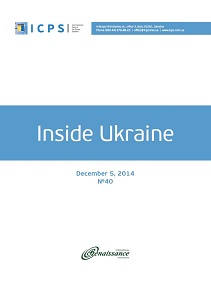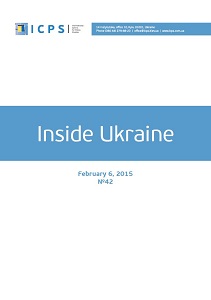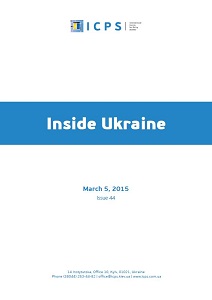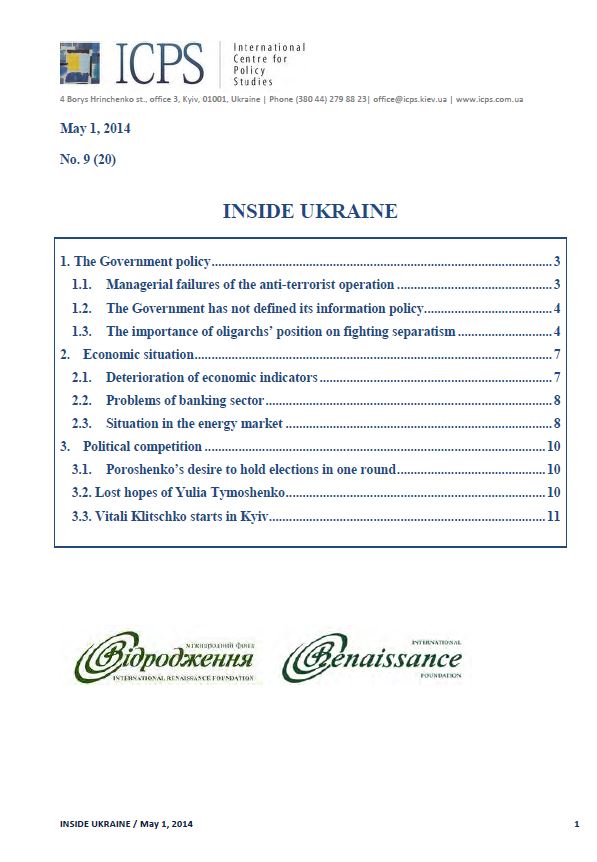
Inside Ukraine, № 2014 - 20
1. The Government policy // 1.1. Managerial failures of the anti-terrorist operation // 1.2. The Government has not defined its information policy // 1.3. The importance of oligarchs’ position on fighting separatism // 2. Economic situation // 2.1. Deterioration of economic indicators // 2.2. Problems of banking sector // 2.3. Situation in the energy market // 3. Political competition // 3.1. Poroshenko’s desire to hold elections in one round // 3.2. Lost hopes of Yulia Tymoshenko // 3.3. Vitali Klitschko starts in Kyiv
More...
